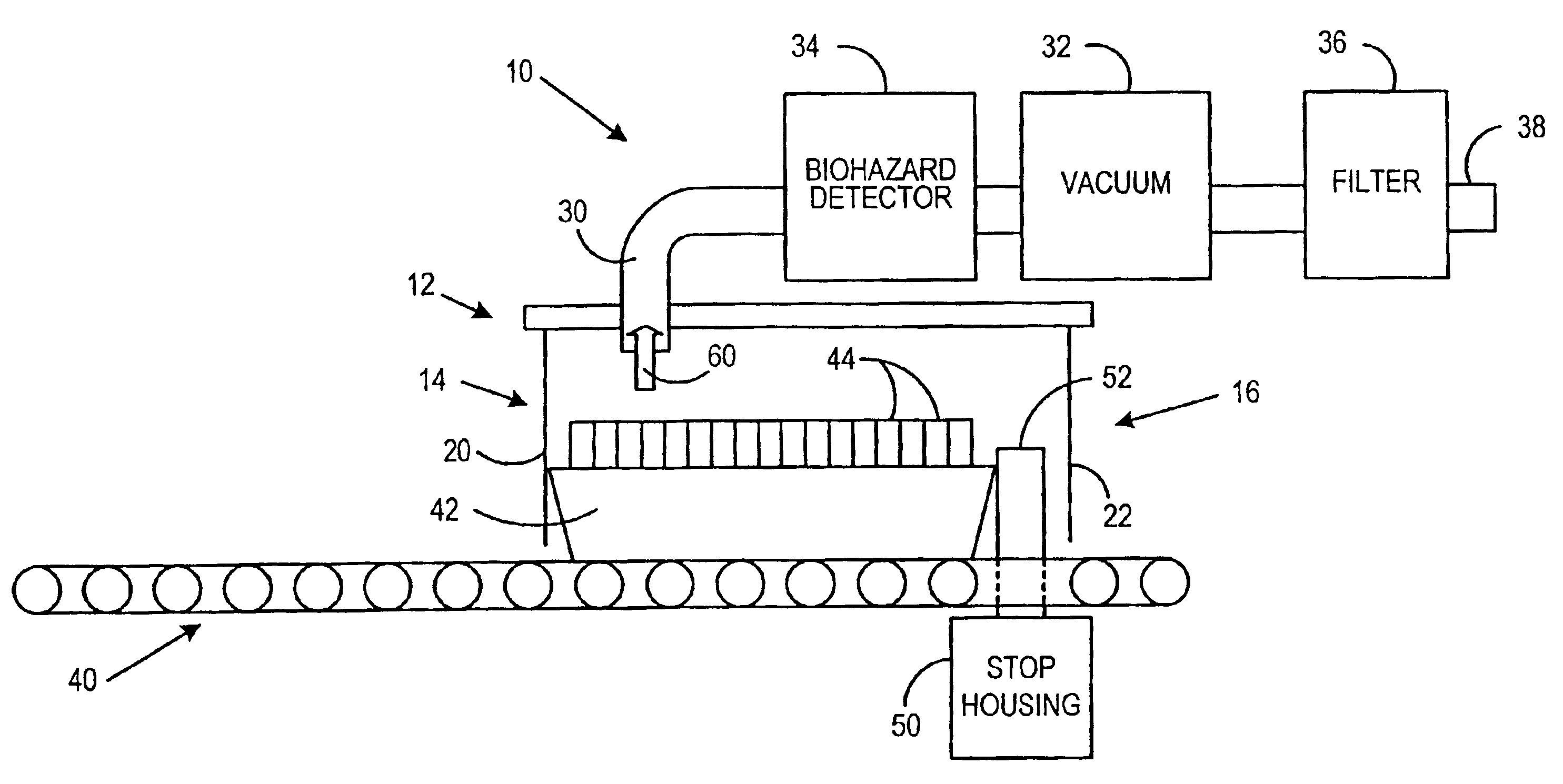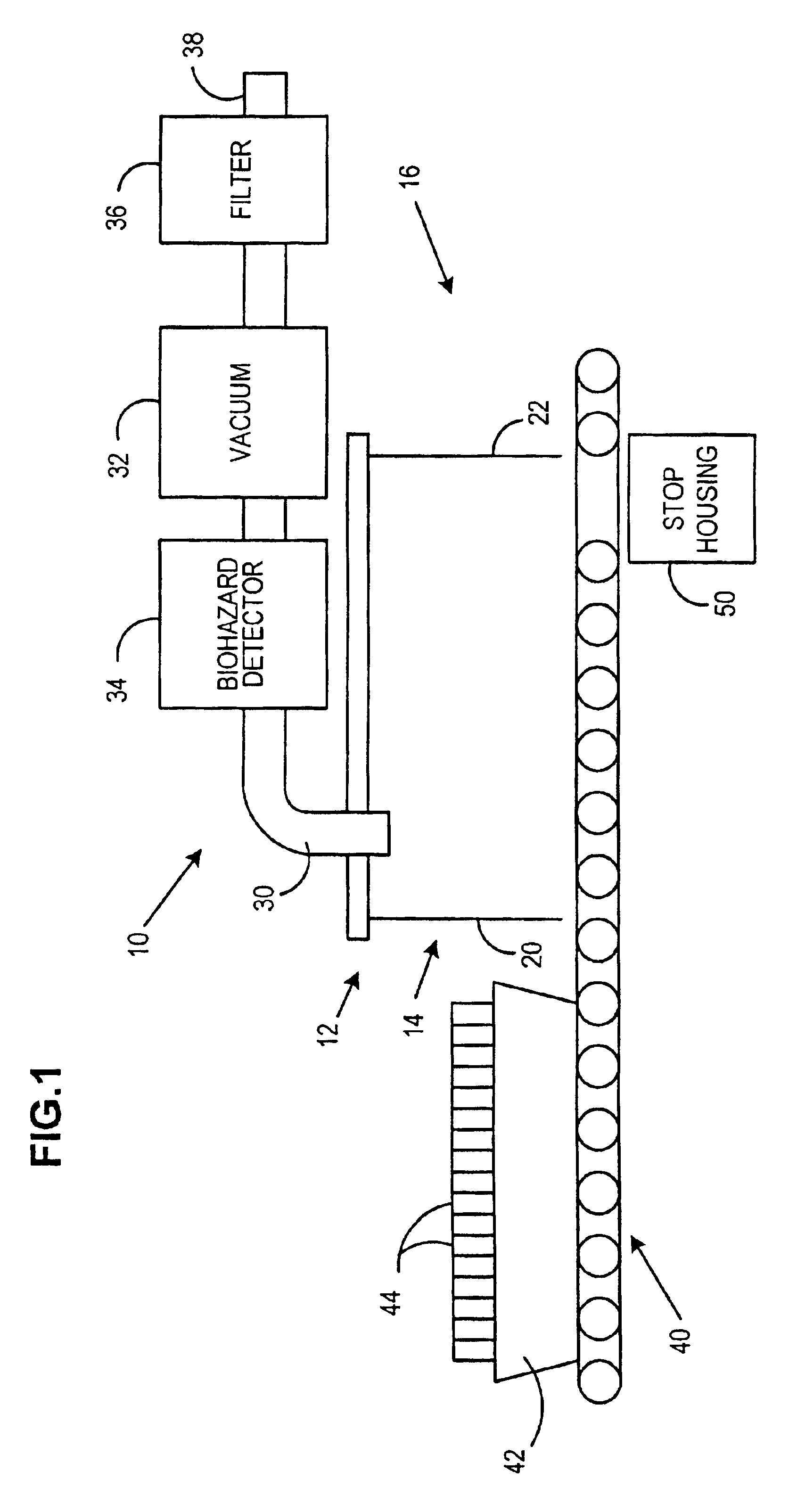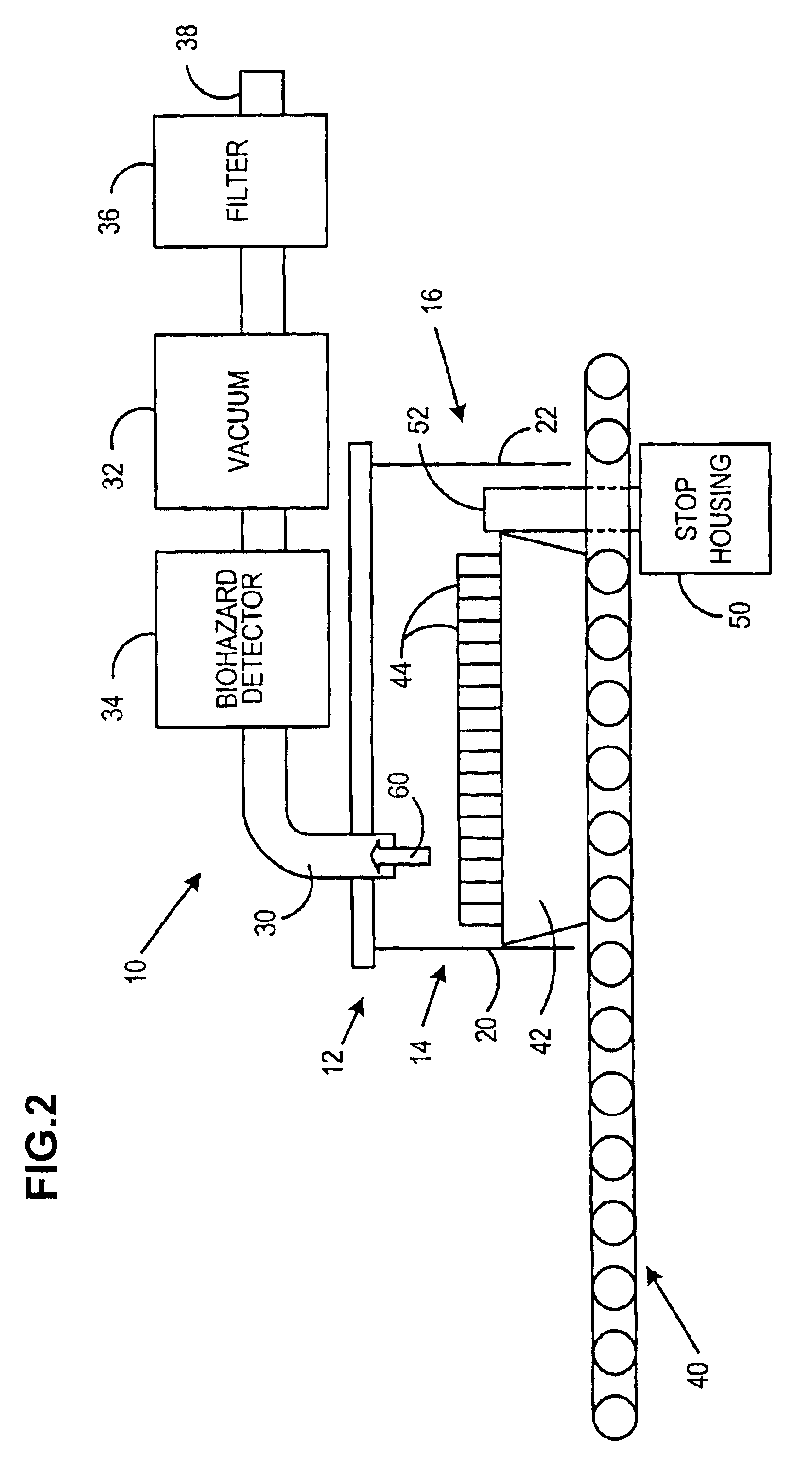Method and system for detection of contaminants in mail
a technology for detecting methods and systems, applied in the field of mail processing, can solve the problems of inability to cross-contaminate other mailpieces, and inability to achieve the effect of a single contaminated mailpi
- Summary
- Abstract
- Description
- Claims
- Application Information
AI Technical Summary
Benefits of technology
Problems solved by technology
Method used
Image
Examples
Embodiment Construction
In describing the present invention, reference is made to the drawings, wherein there is seen in FIG. 1 a system 10 for contaminant detection according to the present invention. System 10 includes a test chamber 12 having an inlet side 14 and an outlet side 16. Inlet side 14 is provided with an inlet curtain 20, and outlet side 16 is provided with an outlet curtain 22. The inlet curtain 20 and outlet curtain 22 are utilized to reduce the amount of exchange of air and dust particles between the inside of chamber 12 and the outside environment surrounding the chamber 12. A stop housing 50, further described below, is provided near the outlet side 16 of chamber 12.
A negative pressure is maintained inside of chamber 12 by a vacuum system 32 via vacuum intake tube 30. Air and dust particles from the inside of chamber 12 are pulled into intake tube 30 and passed through a biohazard detector 34 by vacuum system 32. The exhaust 38 from vacuum system 32 is preferably passed through a biohaza...
PUM
| Property | Measurement | Unit |
|---|---|---|
| volumes | aaaaa | aaaaa |
| volume | aaaaa | aaaaa |
| pressure | aaaaa | aaaaa |
Abstract
Description
Claims
Application Information
 Login to View More
Login to View More - R&D
- Intellectual Property
- Life Sciences
- Materials
- Tech Scout
- Unparalleled Data Quality
- Higher Quality Content
- 60% Fewer Hallucinations
Browse by: Latest US Patents, China's latest patents, Technical Efficacy Thesaurus, Application Domain, Technology Topic, Popular Technical Reports.
© 2025 PatSnap. All rights reserved.Legal|Privacy policy|Modern Slavery Act Transparency Statement|Sitemap|About US| Contact US: help@patsnap.com



